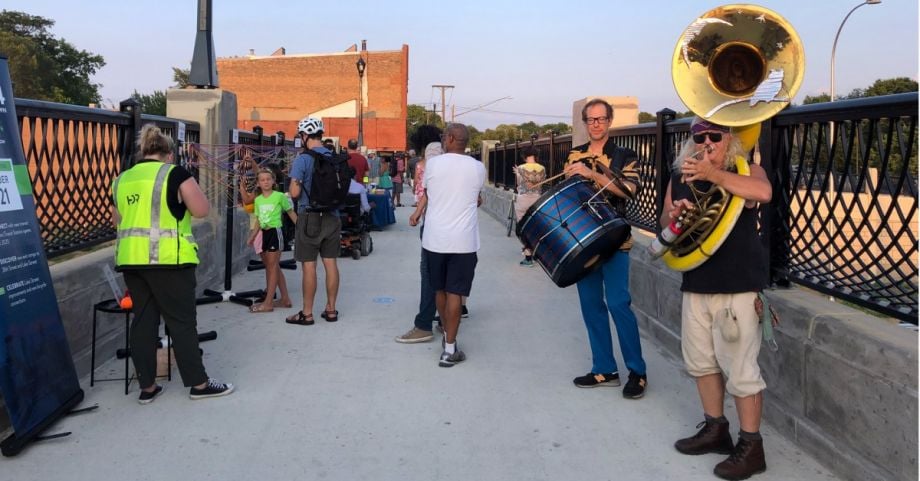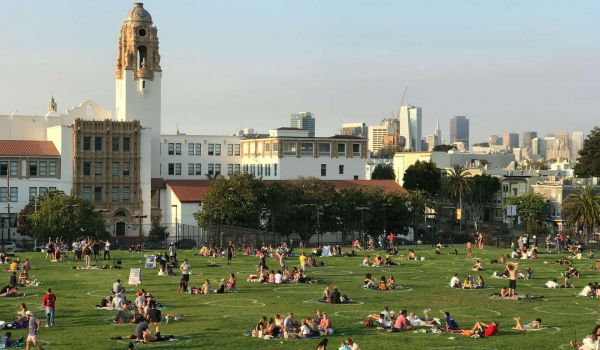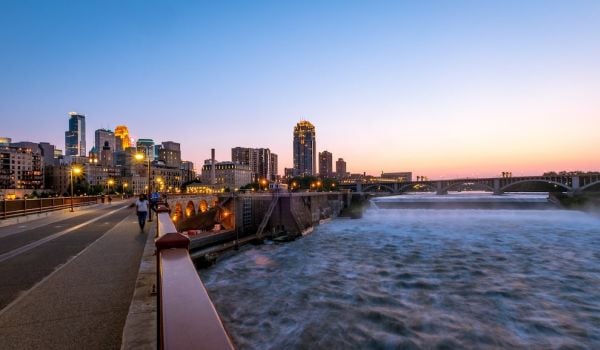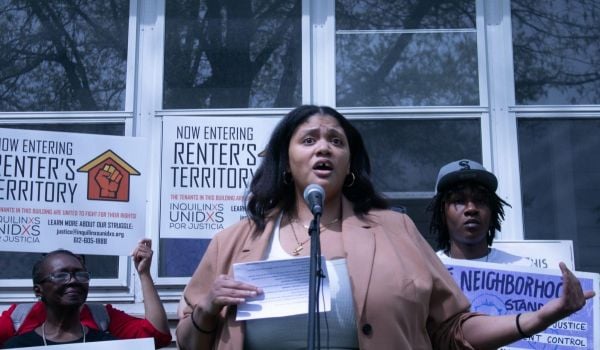If you’ve seen photos of Minneapolis’ skyline from over a highway with streaks of headlights and taillights streaming to and from downtown, chances are those photos were taken from the 24th Street pedestrian bridge over 35W. A narrow eight-foot bridge that hovered roughly 20 feet over the highway, it was such a popular photography spot that camera lens-sized holes had been cut into the chain link fence that encased it.
When the bridge was removed in 2018 as part of the larger 34W-I94 reconstruction project, The Minnesota Department of Transportation held a day-long event for photographers to come to the bridge one last time to capture the iconic view. “We saved some of the chain link where people had cut out holes to save that piece of the history,” says Aaron Tag, MNDOT’s West Area Engineer, says. A replacement pedestrian bridge was finished last month, and MNDOT held a grand reopening event on August 19 that featured some of the photos taken on the old bridge’s final day.
Dubbed Bridgefest, the event, which also featured music, art kit giveaways, and theater performances, was a collaboration between MNDOT and community groups and organizations designed to kick off what the bridge’s constriction was all about—community connections.
“The old bridge was very narrow, about eight feet wide,” Tag says. “There were stairs on one side and a little ramp on the other. It wasn’t ADA accessible at all.” The disconnection that the pedestrian bridge created was an extension of the disconnection and disruption that highway itself brought to the communities—largely communities of color—when its construction sliced through the heart of the city in the 1950’s.
“If you go back in history, when 35W was built, it divided the community. Hopefully the new bridge can reconnect it at least a little bit,” Tag says.
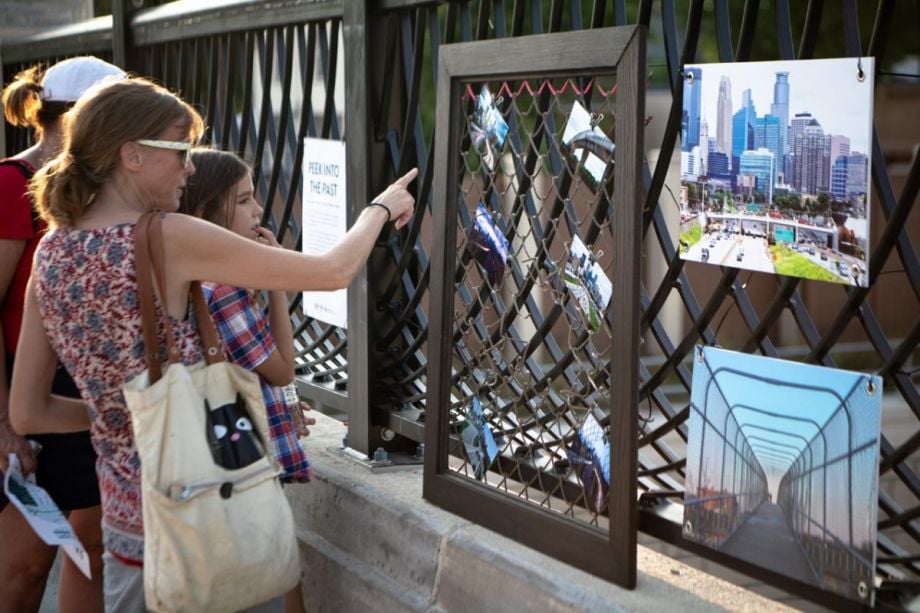
Photos taken from the old, iconic pedestrian bridge were on display during “Bridgefest” (Photo courtesy MNDoT)
In 2018 and 2019, MNDOT hosted dinners on bridges and important intersections relating to the project, which Tag describes as having been a huge success. MNDOT learned that “the more we can involve the community, the more we invest in not making it an MNDOT event but a community event where MNDOT is part of it makes it more successful,” Tag says. Considering that between 300 and 400 people ultimately attended the event, Bridgefest was a win for MNDOT.
“It’s about celebrating a new connection that was there before but wasn’t very accessible, and then it was gone for a number of years. We wanted to celebrate the new connection across the highway and always help people and communities on either side explore and connect to things on the other side.”
Thanks to an ongoing community engagement grant that has allowed MNDOT to contract out community engagement to experts, the event was ultimately a partnership between two neighborhood groups and the Minneapolis Institute of Art, Hennepin History Museum, Open Eye Theatre, and the American Swedish Institute, which are all nearby.
Tag said MNDOT collaborated with its partners to figure out what would be the best, mutually beneficial option for them when it came to participating—one that would draw crowds for them and would be enticing enough to get people to cross over the bridge in service of the overall event.
In addition to timing an event around a construction schedule, Tag also had concerns about making it worth it for the community groups involved. “When you’re involving community partners who don’t have to do this, hopefully they’re seeing a lot of the benefits,” he says. “You hope that they don’t put all this effort into it and five people show up.”
For the Hennepin History Museum at least, the effort of involvement was well worth it.
“The obvious reason to engage with Bridgefest was that [the bridge] is right by our building,” says John Crippen, the executive director of the Hennepin History Museum. “It not only fits into our content, but it was a nice way to reconnect with our neighbors after a year and a half of isolation with COVID.”
Crippen says that for them, Bridgefest was something of a follow- up event because, a few weeks prior, they had worked with MNDOT to bury a time capsule as part of the larger construction project.
On the day of the event the museum was not only open, but they also set up a table on the sidewalk a few blocks away closer to the bridge to direct people towards the location. “We had about 75 people throughout the event, so that was a good night for us. It drove a lot more traffic,” Crippen says.
The event was “a great example of a department of transportation intentionally connecting with the community,” he says. “They put the [community engagement] resources into it. They made sure they hired a company that knew how to do this.”

Cinnamon Janzer is a freelance journalist based in Minneapolis. Her work has appeared in National Geographic, U.S. News & World Report, Rewire.news, and more. She holds an MA in Social Design, with a specialization in intervention design, from the Maryland Institute College of Art and a BA in Cultural Anthropology and Fine Art from the University of Minnesota, Twin Cities.
Follow Cinnamon .(JavaScript must be enabled to view this email address)

